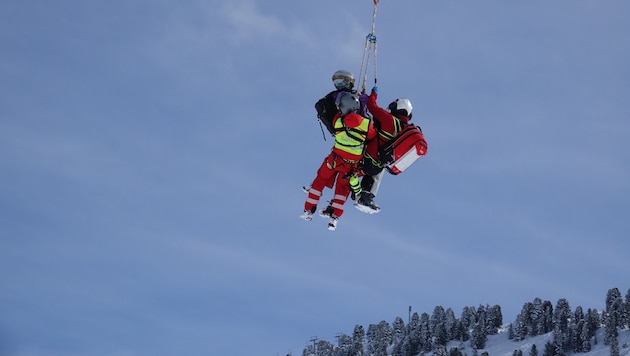32 percent die
When the clock is ticking: How to survive an avalanche
23 percent of all avalanche accidents end fatally. At first glance, the chance of survival seems relatively high. But after 15 minutes, it drops rapidly.
It starts with a soft crackling sound, a barely perceptible trembling under the masses of snow. Then the avalanche begins its huge, deadly ballet high up in the Alps and takes everything with it on its way down.
Just on Tuesday, such a natural spectacle occurred on the Bärenkopf in Tyrol, where a group of six hikers were buried by a glacier avalanche. A 19-year-old lost his life.
On Thursday, another avalanche occurred in Tyrol, again claiming the lives of several people. A Dutch touring group was buried by snow.
The early summer temperatures are melting the snow up there, rapidly increasing the risk of so-called wet snow avalanches. At first glance, the probability of surviving an avalanche accident is quite high. After all, according to statistics, only 23 percent end fatally. While the death rate for partially buried avalanche victims is around four percent, it is significantly higher for completely buried victims at 52.4 percent.
Hands in front of the face
According to experts, however, the chance of survival decreases gradually with the duration of the burial. After 15 to 20 minutes, there is a steep drop in the survival curve. Every second without an oxygen supply threatens to cause more damage to the brain. If the interruption lasts longer, the brain tissue is damaged and brain cells are irretrievably destroyed. The damage can be so severe that the brain stops functioning altogether. And this happens after more than five minutes without oxygen: the brain cells begin to die.
So what is the best way to behave if you come under an avalanche? Keeping your hands close to your face would be ideal. This is because the basic prerequisite for survival in the first phase is a clear airway. The presence of a breathing cavity is an additional plus, which you can create by placing your hands in front of your face.
Caution during rescue
New analyses also show that snow density also plays a role in avalanche accidents, especially in continental climates such as the Alps. Experience from the Alps shows that chances of survival decrease more quickly in spring with wet snow. In addition, the number of fatalities has increased as winter sports enthusiasts are increasingly out and about on steep and rocky terrain.
It is recommended that avalanche victims who have been buried for more than 60 minutes and have a core body temperature below 30 degrees should be rescued carefully and primarily treated for hypothermia. In the event of cardiac arrest, hypothermic victims are more likely to survive during and after resuscitation. Ideally, warming should take place in a clinic with a heart-lung machine.
For severely hypothermic avalanche victims, resuscitation can be temporarily interrupted during transportation to facilitate rescue from difficult terrain.













Kommentare
Willkommen in unserer Community! Eingehende Beiträge werden geprüft und anschließend veröffentlicht. Bitte achten Sie auf Einhaltung unserer Netiquette und AGB. Für ausführliche Diskussionen steht Ihnen ebenso das krone.at-Forum zur Verfügung. Hier können Sie das Community-Team via unserer Melde- und Abhilfestelle kontaktieren.
User-Beiträge geben nicht notwendigerweise die Meinung des Betreibers/der Redaktion bzw. von Krone Multimedia (KMM) wieder. In diesem Sinne distanziert sich die Redaktion/der Betreiber von den Inhalten in diesem Diskussionsforum. KMM behält sich insbesondere vor, gegen geltendes Recht verstoßende, den guten Sitten oder der Netiquette widersprechende bzw. dem Ansehen von KMM zuwiderlaufende Beiträge zu löschen, diesbezüglichen Schadenersatz gegenüber dem betreffenden User geltend zu machen, die Nutzer-Daten zu Zwecken der Rechtsverfolgung zu verwenden und strafrechtlich relevante Beiträge zur Anzeige zu bringen (siehe auch AGB). Hier können Sie das Community-Team via unserer Melde- und Abhilfestelle kontaktieren.